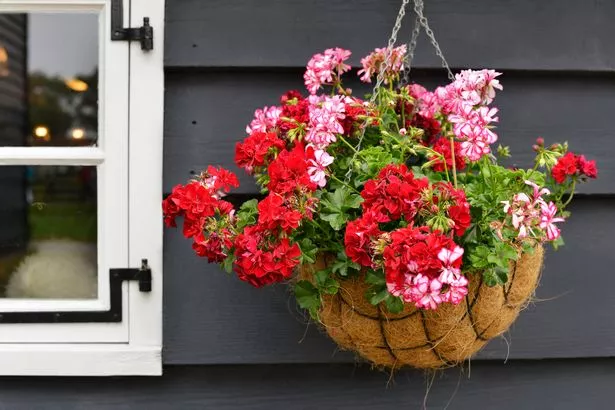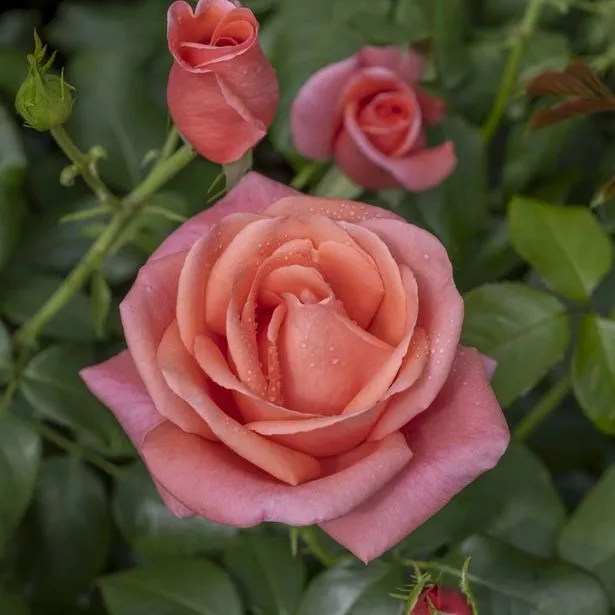Blooms are under siege from sap-sucking aphids right now but encouraging their natural predators to move into your patch will keep them under control this year and next
04:00, 24 May 2025Updated 10:16, 24 May 2025
 Put away the bug spray and encourage greenfly’s old enemy, the ladybird, to enter your garden(Image: Getty Images/500px)
Put away the bug spray and encourage greenfly’s old enemy, the ladybird, to enter your garden(Image: Getty Images/500px)
As May draws to a close, it feels summer is arriving. Daylight stretches well into the evening, temperatures are on the rise, and the soil is warm — ideal conditions for getting out into the garden. It’s also perfect conditions for aphids, also known as greenfly or blackfly, which do enormous damage to some beautiful plants such as roses, which we love to grow.
But the good news is that ladybirds have a huge appetite for aphids, munching thousands of the critters in their short life spans. You can protect your crops by encouraging ladybirds, by leaving a patch of nettles to grow in the garden. Nettles are a favourite egg-laying plant for ladybirds so if you leave the stingers untouched you will be helping to increase the number of these spotted bugs.
Another tactic is to plant some calendula, the cheerful yellow and orange flowers that attract many beneficial insects including ladybirds, lacewings and hoverflies – the good guys that help control aphids and other destructive pests. Longer term, ladybirds need places to hibernate in winter such as crevices of bark on trees and in piles of leaf litter; you could also make a ladybird house filled with bits of bark and old leaves.
 Pinch out tomato side shoots this week – by pinching off the top part of a stem, the plant will redirect its energy to the main shoots(Image: Getty Images/iStockphoto)READ MORE: Strawberries will grow better in your garden if you do one simple thing
Pinch out tomato side shoots this week – by pinching off the top part of a stem, the plant will redirect its energy to the main shoots(Image: Getty Images/iStockphoto)READ MORE: Strawberries will grow better in your garden if you do one simple thing
But back to late spring, there is much to do in the garden now. Here’s my list of the top jobs of the week:
You can have as much colour as you like in the garden now – plant out tender summer bedding in containers, baskets and beds. Dead head roses and feed fortnightly. Keep an eye out for aphids and remove.Bluebell leaves will be yellowing. If you want to lift and divide and spread them about, now’s the time to do so.In the veg patch, you can plant out anything sown indoors and continue sowing seeds outdoors.Pinch out tomato side shoots, tie growing peas and beans to supports, and cover fruit with netting to prevent birds from tucking in.Tender herbs such as basil can be planted out in your herb garden or window boxes.Thin out sowings of hardy annuals planted earlier – 10 to 20cm apart. Cover fruit, such as strawberries, with netting to prevent the birds from getting at them(Image: Getty Images/iStockphoto)How to create hanging baskets
Cover fruit, such as strawberries, with netting to prevent the birds from getting at them(Image: Getty Images/iStockphoto)How to create hanging baskets
Now is the perfect time to plant summer bedding in most areas, as the risk of frost is largely behind us. But keep an eye on local forecasts; if night temperatures are expected to drop below 7°C, tender plants may still suffer. In those cases, protect your plants overnight with horticultural fleece, hessian or even a light sheet. Hanging baskets are a fantastic way to add instant impact and vibrant colour, especially in smaller outdoor spaces like balconies, porches, and patios.
With the right plants and a little care, your hanging basket can become a miniature floating garden that blooms all summer long. For reliable results, stick with tried and tested favourites such as calibrachoa, petunias, pelargoniums, fuchsias, marigolds, verbena and lobelia. These varieties are known for their abundant blooms.
If your basket will be in a partially shaded spot, consider using busy lizzies, begonias, or fuchsias, which all thrive without full sun. For trailing interest, ivy, Helichrysum, or cascading ivy-leaved pelargoniums will create a lush, flowing effect. To plant your hanging basket, start by resting the wire frame on a bucket or plant pot to stop it rolling.
 With the right plants and a little care, your hanging basket will bloom all summer long(Image: Getty Images/iStockphoto)
With the right plants and a little care, your hanging basket will bloom all summer long(Image: Getty Images/iStockphoto)
Then line the basket – traditionally, sphagnum moss was used, but it’s important not to harvest it from the wild. Sustainable alternatives include coir and cardboard. Once lined, cut several small slits near the bottom to allow for planting trailing varieties at the lower level. Next, fill the basket halfway with high-quality potting compost.
For easier maintenance, mix in a slow-release fertiliser and water-retaining gel pellets. Despite these additives, daily watering is a must in warm or windy weather, as hanging baskets dry out quickly. Begin planting by carefully inserting trailing plants through the slits at the base. Gently push each plant through from the inside out, keeping the root ball within the basket.
Space them evenly for a balanced appearance. Add more compost as you go and, if your basket is deep enough, you can add another layer of plants mid-way up. Finish by planting the top of the basket, starting in the centre and working outward, with trailing plants around the edge for a full, cascading effect. Once you’re happy with the arrangement, water the basket thoroughly and hang it in its chosen spot.
During very hot spells, you may need to water both morning and evening – but avoid overwatering, which can wash away nutrients. A weekly feed with a high potash liquid fertiliser will help prolong flowering throughout the season. With a little effort and the right care, hanging baskets can transform any outdoor space into a vibrant, flower-filled retreat all summer long.
Plant of the week: Rosa ‘Catherine’s Rose’ The rosa ‘Catherine’s Rose’ has been named in honour of the Princess of Wales(Image: RHS)
The rosa ‘Catherine’s Rose’ has been named in honour of the Princess of Wales(Image: RHS)
The RHS has named this rose for Her Royal Highness The Princess of Wales, to celebrate the healing power of nature. Bred by Harkness Roses, it will be available as bare root this autumn and £5 from the sale of each rose plant will be paid in support of The Royal Marsden Cancer Charity. It’s a floribunda with subtle coral-pink abundant blooms, and has a rich perfume with hints of Turkish delight and mango. With flowers that attract pollinators, it will thrive in a mixed border, as a hedge, in a large container or in a rose bed.
Tiso’s camping range
This article contains affiliate links, we will receive a commission on any sales we generate from it. Learn more
£230
£84
Tiso
Buy Now on Tiso
This tent has a waterproof polyester flysheet to withstand heavy rain, lantern hanging points and internal storage pockets.

